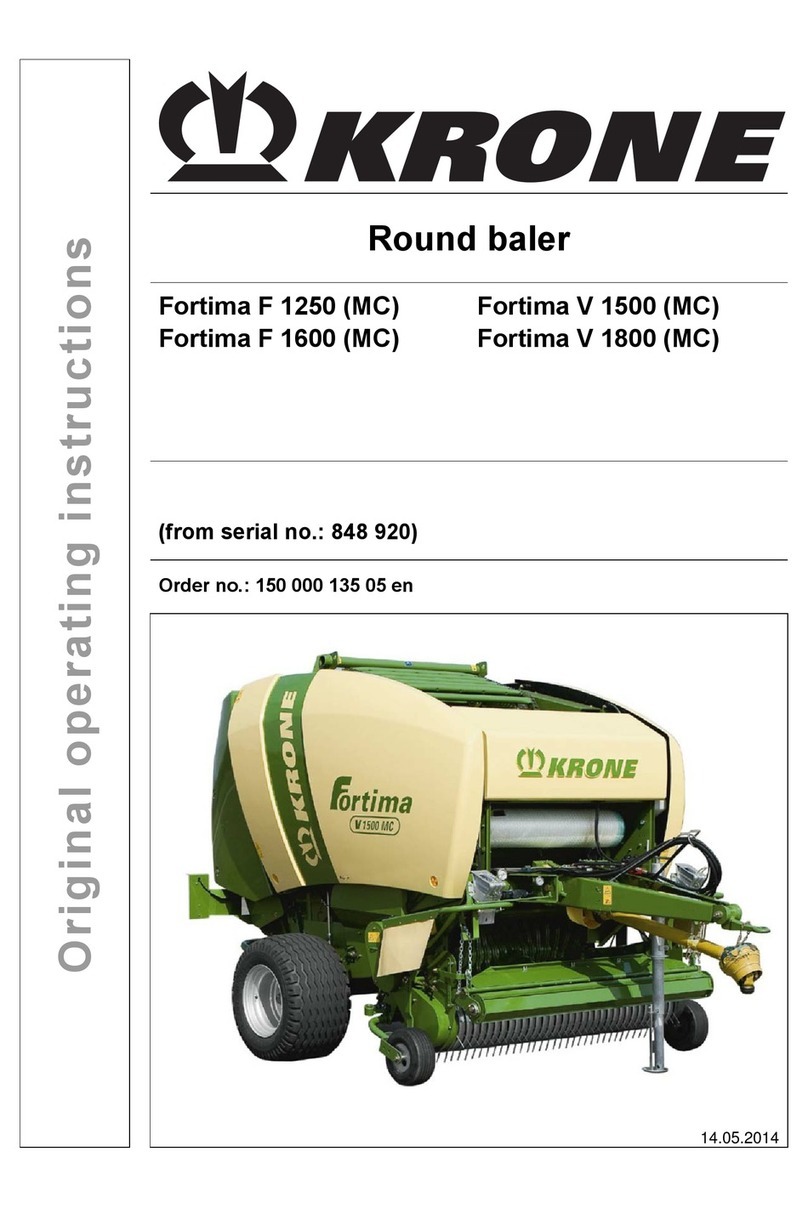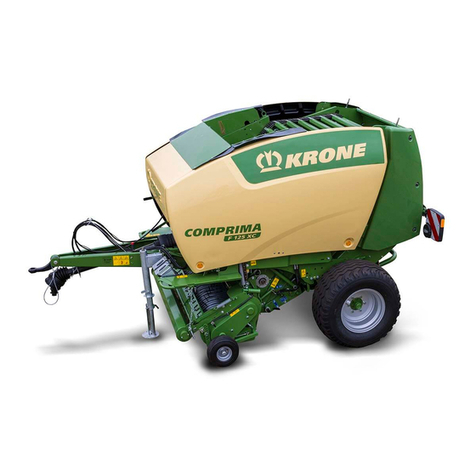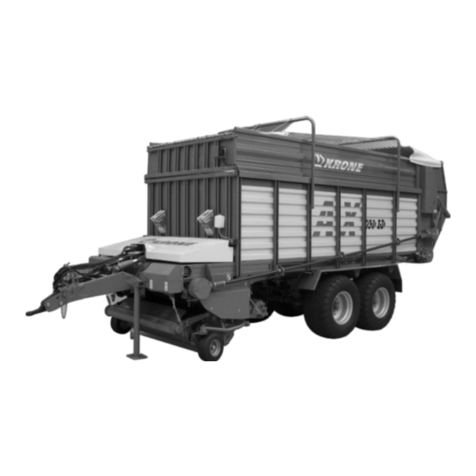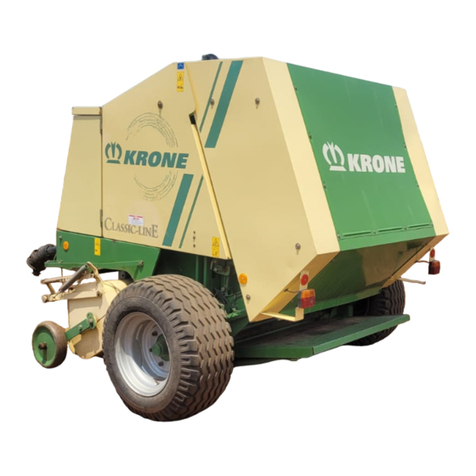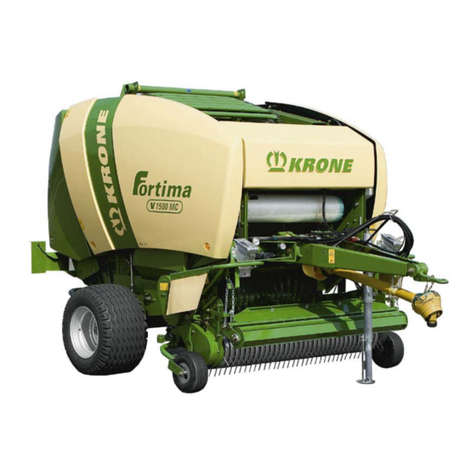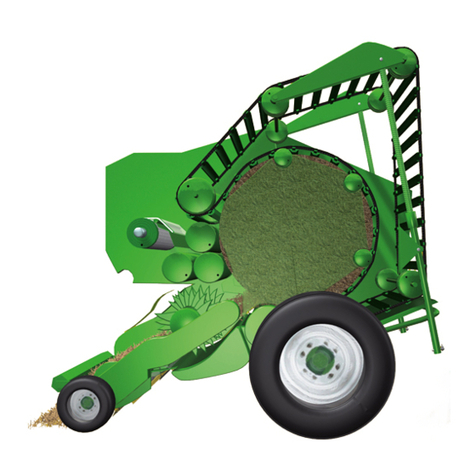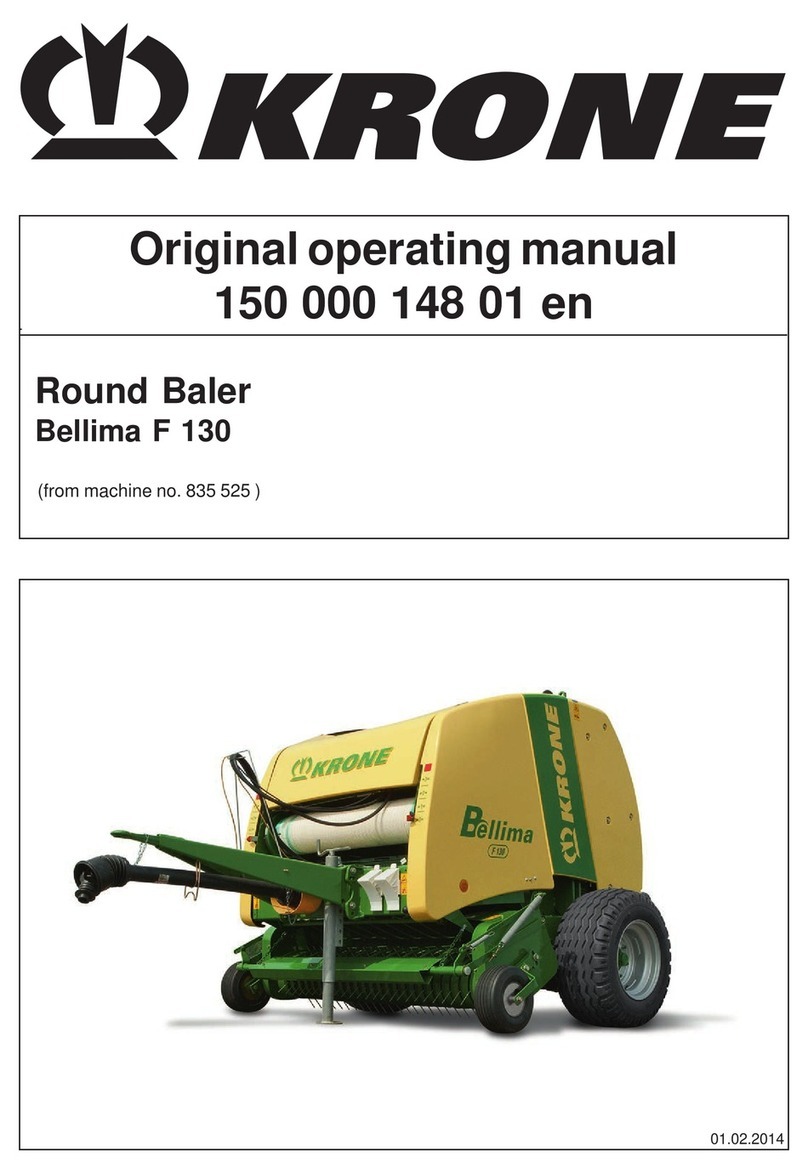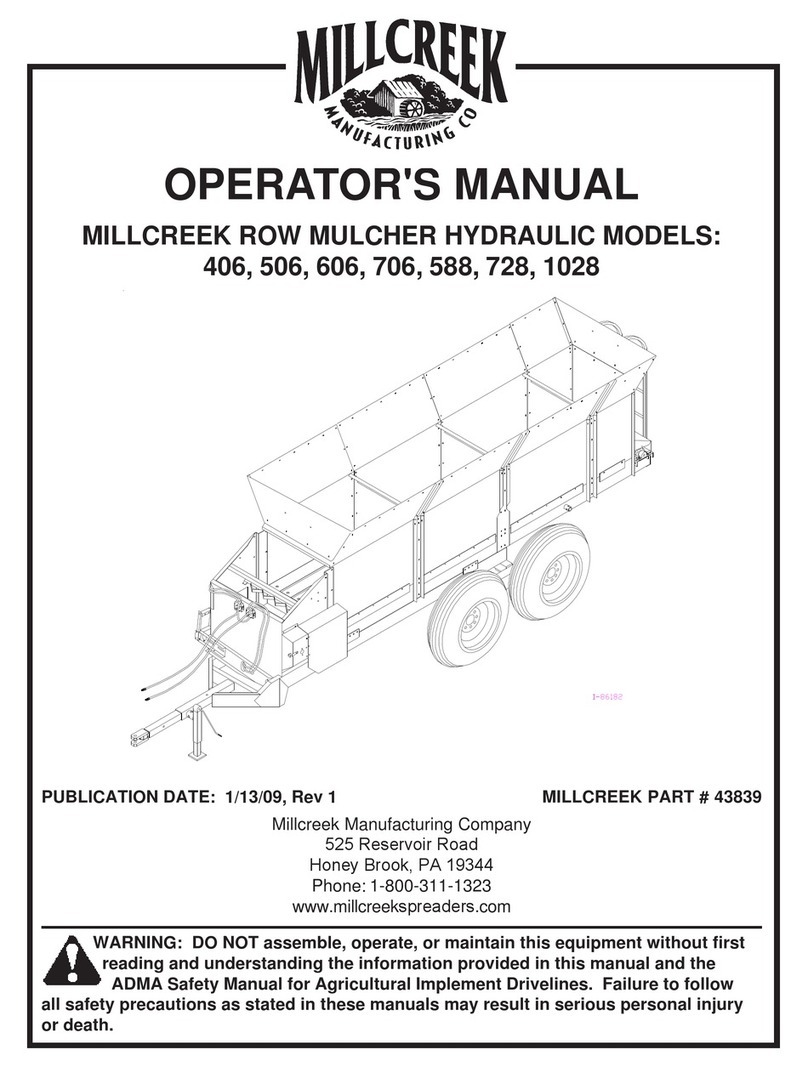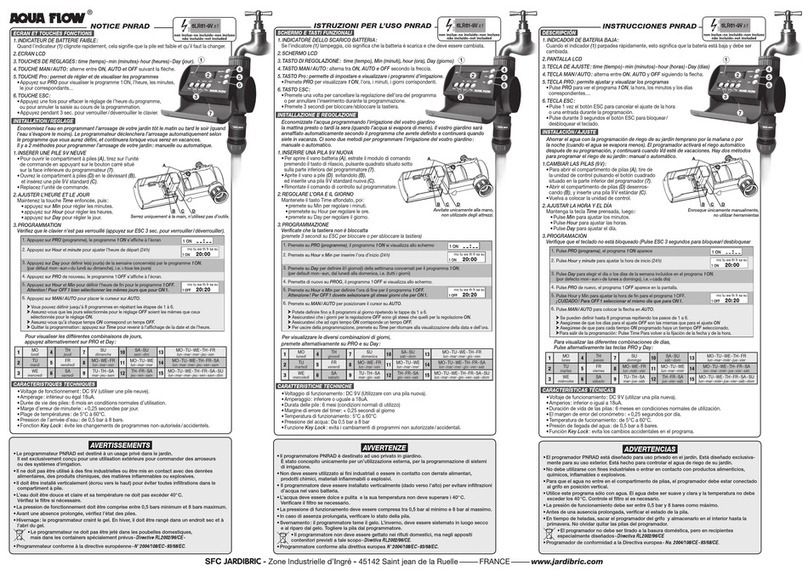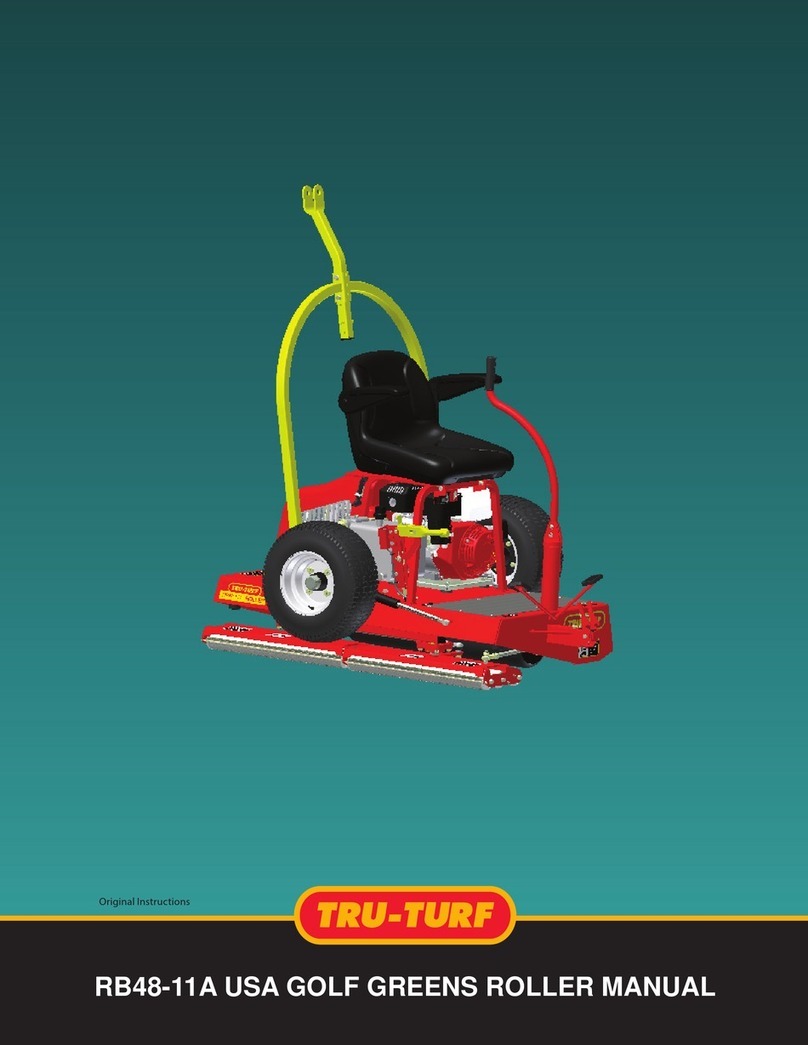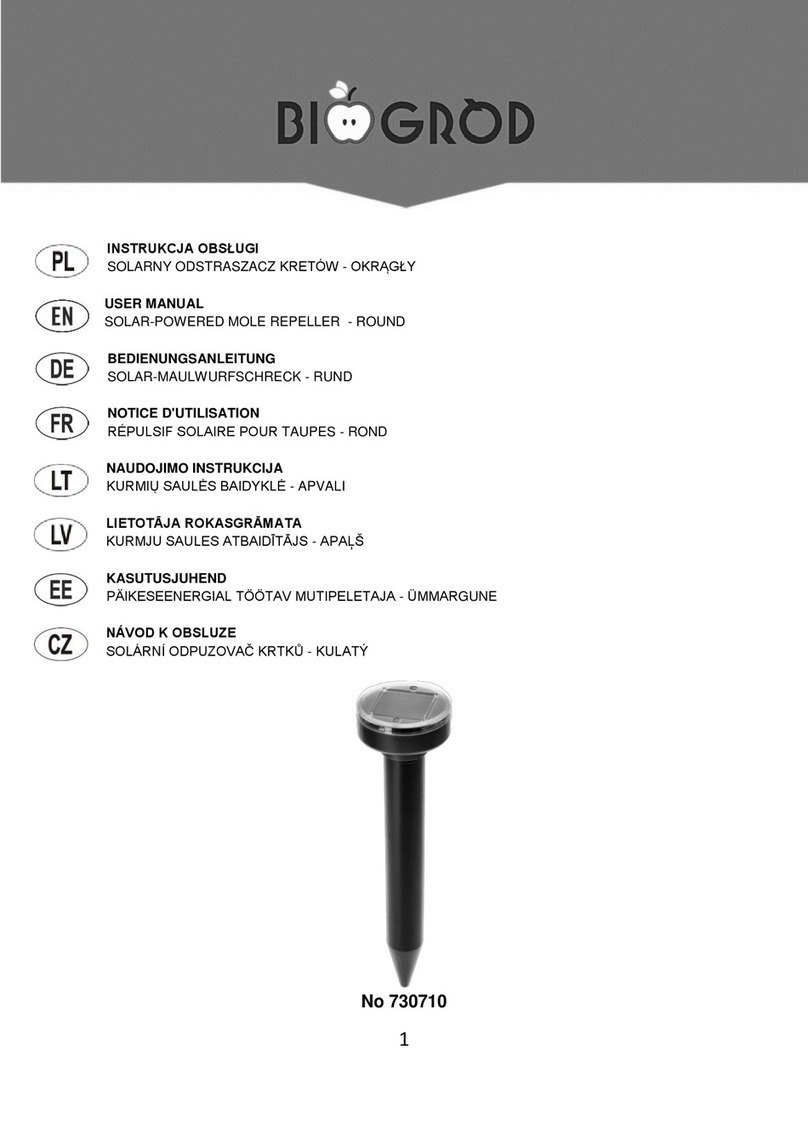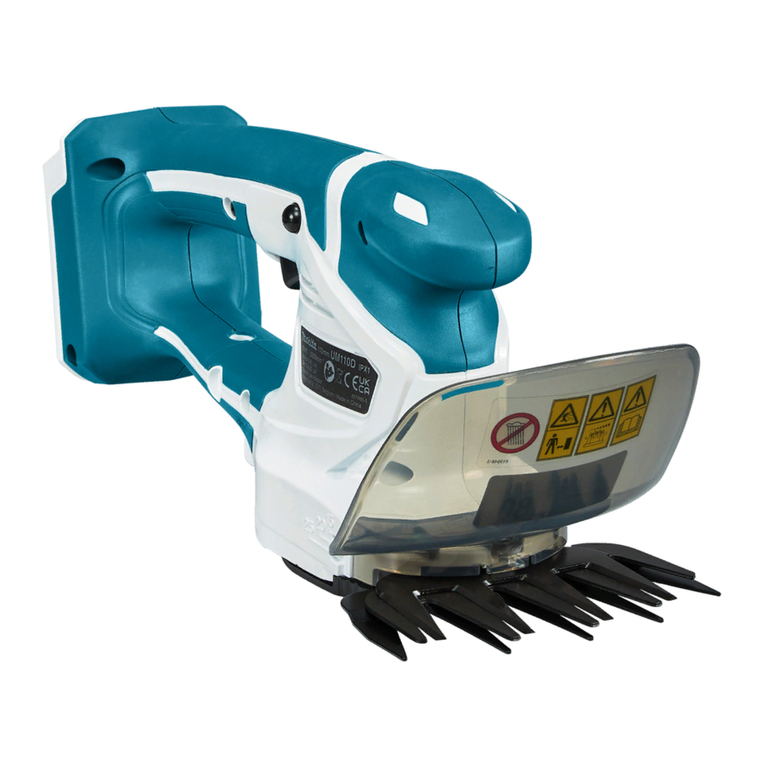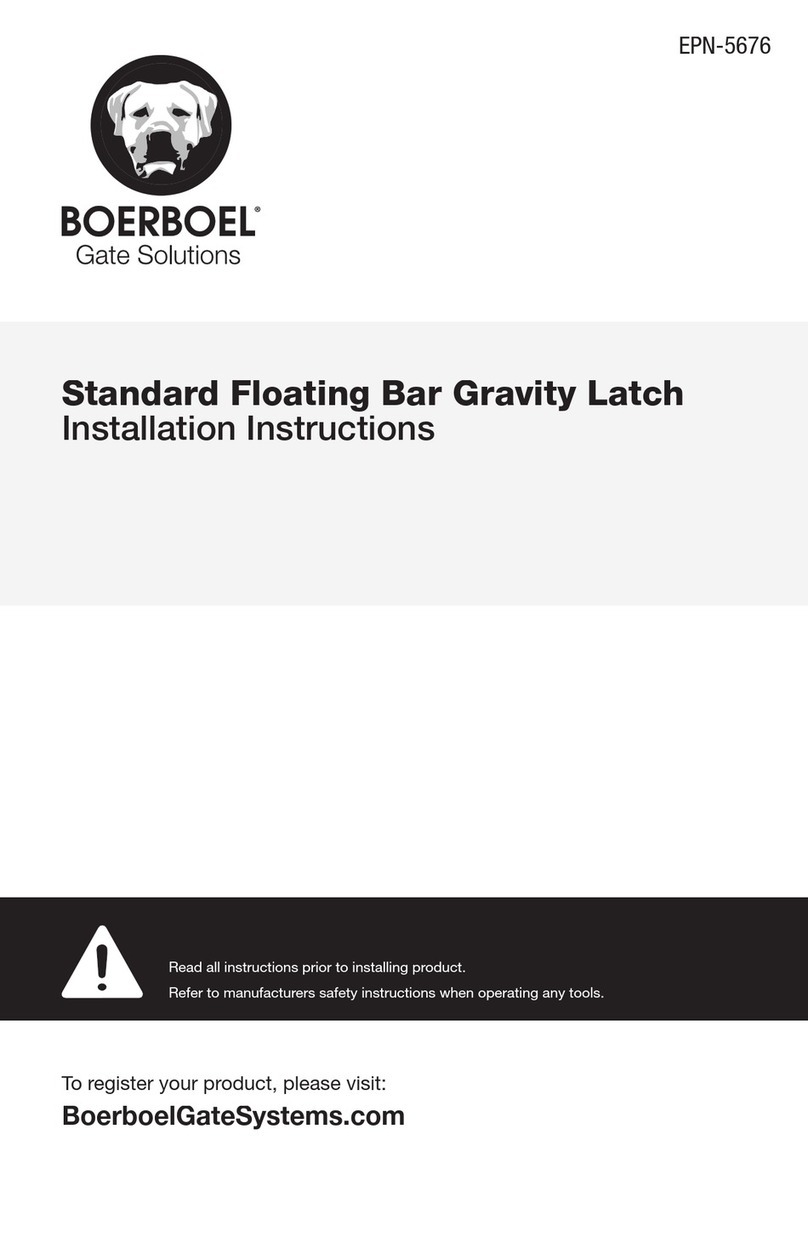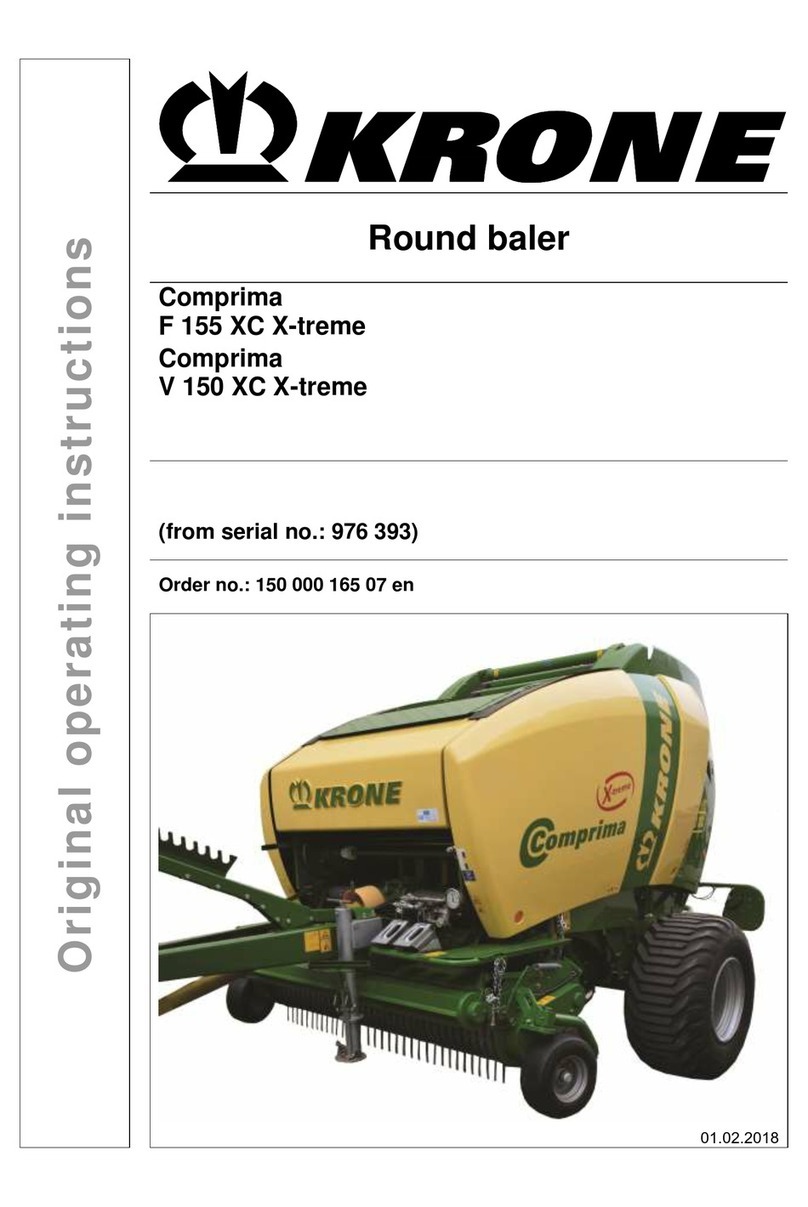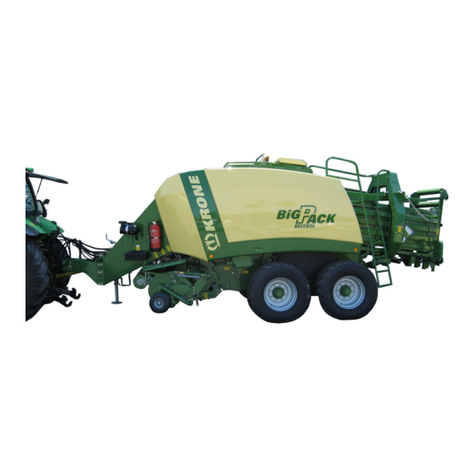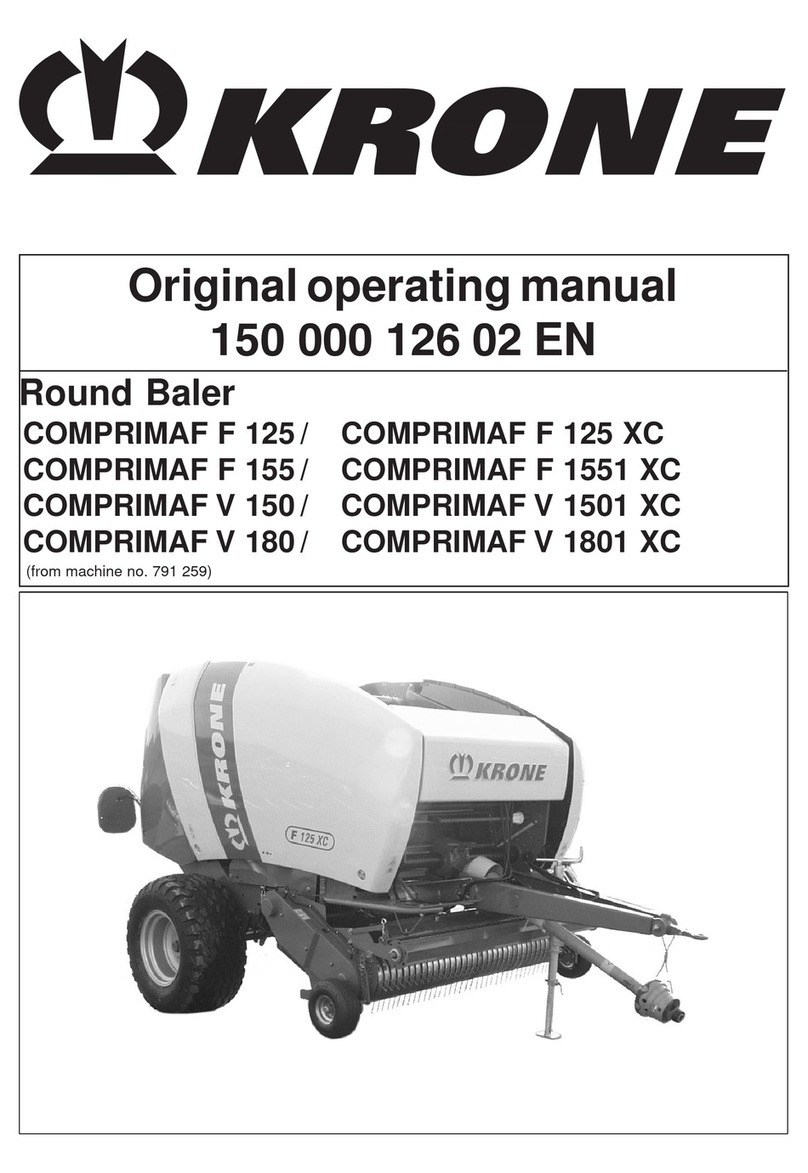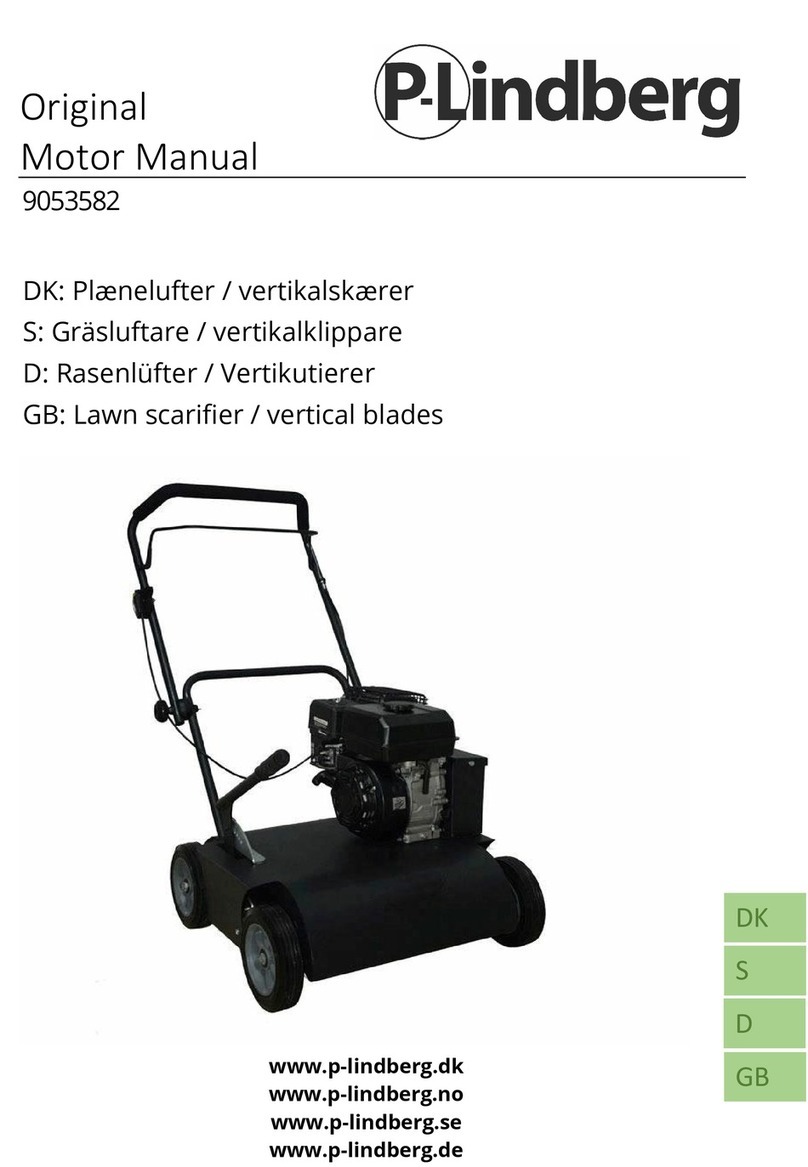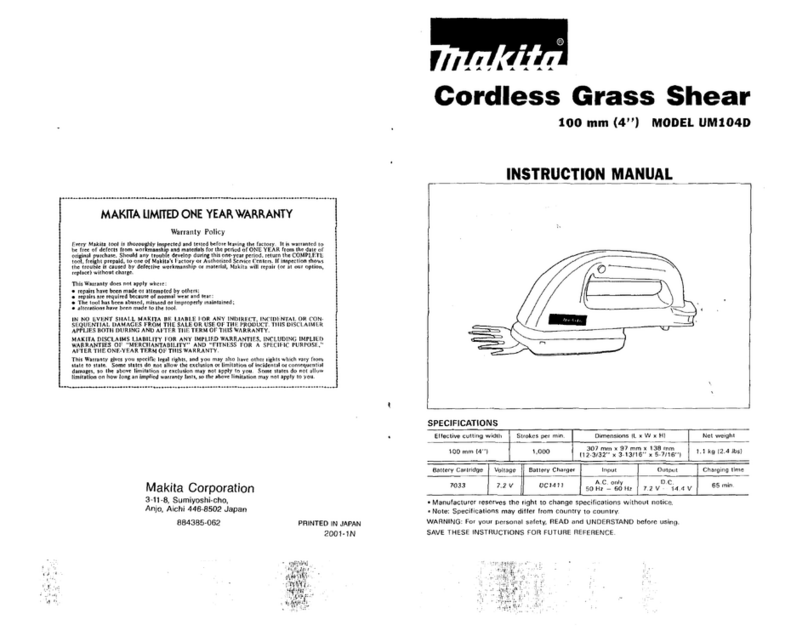6
5. The operator´s clothing should be tight fitting. Avoid
wearing loose fitting clothes.
6. Keep the machine clean to prevent the danger of fire!
7. Before startingthe machineand movingoff, check the
dangerareaaroundthetractor(children!).Goodvisibility
is absolutely essential!
8. Carrying passengers on the implement during work or
transport is not permitted.
9. Makesurethattheimplementiscorrectlycoupled,and
that it is only fixed and secured with the prescribed
fittings!
10.Makesurethatthesupportingdevices,jacksetc.arein
thecorrectpositionduringassemblyanddisassembly!
11.Specialcareisrequiredwhenequipmentisbeingcoupled
to the tractor or detached from the tractor!
12.Ballast weights must always be attached in the
prescribed way at the designed attachment points!
13.Adhere to the permitted axle loads, total weights and
transportdimensions!
14.Checkandfittransportequipment–e.g.lighting,warning
signsand, ifrequired, protectiveequipment!
15.Operatingequipmentforremotecontrols(ropes,chains,
rodsetc.)mustbelaidoutinsuchawaythat,whatever
theworkingortransportposition,itcannotinadvertently
cause any movements.
16.Prepareequipmentforroadtransportasprescribedby
the manufacturer, and lock the equipment in accor-
dancewiththemanufacturer'sregulations!
17.Never leave the driver´s position when the tractor is in
motion!
18.The speed of travel must always be suited to the
environmentalconditions!Avoidanysuddenturnswhen
travelling uphill, downhill or across a slope!
19.The handling, steering and braking of the tractor is
affectedbyintegratedorattachedequipmentandballast
weights.Makesure that youallowformore flexibilityin
steeringandbraking!
20.When turning, remember to take account of the wide
loadand/orthegreaterweight oftheequipment!
Safety and Accident Prevention
Regulations
1. Take note of both the regulations in these operating
instructions and also the general safety and accident
preventionregulations!
2. The attached warning and information signs give
importantadviceforsafeoperation.Observingthemwill
enhanceyour safety!
3. Whenyouusepublicroads,makesureyouobservethe
relevanttrafficregulations!
4. Makesureyouknowallequipmentandcontrolsbefore
you begin working with the machine. When you are
operating the machine, it´s too late!
Basic rule:
Before any public roads are used
and before the machine is started,
check the round baler and the tractor
for road-worthiness and operational
safety.
Operation in Accordance with
Specifications
The round baler is designed solely for normal agricultural
use(operation in accordancewithspecifications).
Anyuseofthemachineforotherpurposesisdeemedtobe
not in accordance with specifications. The manufacturer
bearsnoresponsibilityforanyresultingdamage;suchuse
is entirely at the operator´s risk.
Use in accordance with specifications also includes
adherence to the operating, maintenance and service
instructionsprescribedbythe manufacturer.
Theroundbalermustonlybeused,maintainedandrepaired
by personnel who are acquainted with the machine and
havebeen informedofthe dangersinvolved.
Theapplicableaccidentpreventionregulationsandallother
generally recognized safety, health and road traffic
regulationsmustbeadheredto.
Any unauthorized alterations to the machine render any
liabilityfordamageundertakenbythemanufacturernulland
void.
II. General
